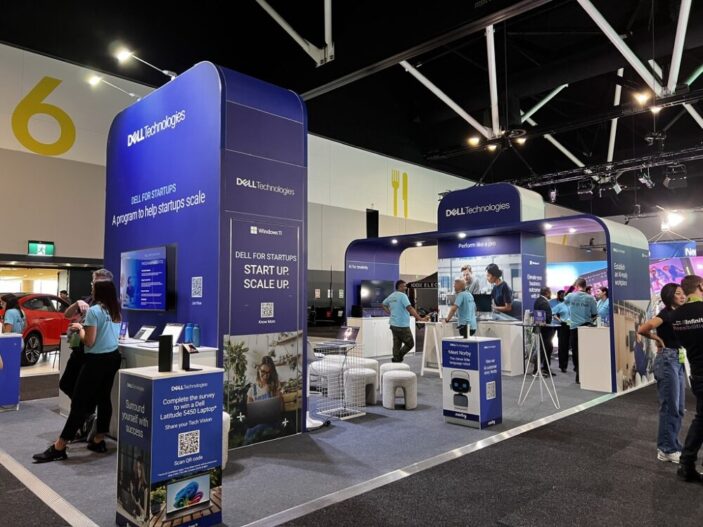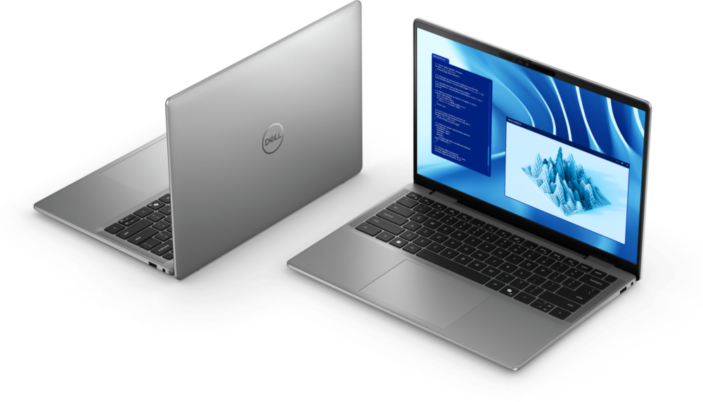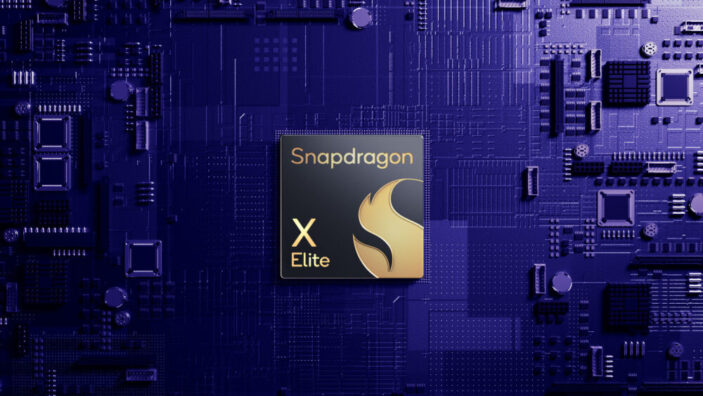
Steve Jobs once said, “People who are really serious about software should make their own hardware.” That very well became the case with the quantum leap advent of the ARM-based Apple M silicon that now, in its latest 4th generation, has its architecture built for Apple’s own AI cheekily named Apple Intelligence.
But on the other side of the ring, competition is good for the consumer and thus, DELL and Windows have now well and truly started fighting back on that hardware and software cohesion philosophy with competitive offerings collaborating with Qualcomm and their own ARM-based, AI-accelerated, purpose-built-for-laptops Snapdragon lineup. Dell is most certainly leading the charge with a compelling case of products including the Dell Latitude 7455 14” (Copilot+PC) 2-in-1 Laptop armed with Qualcomm’s Snapdragon X-series of processors in 16GB RAM / 512 GB Storage and 32GB RAM/ 1TB Storage variants.
With its design built from the ground up to accelerate and streamline AI-centric tasks with efficiency and prowess, it’s definitely an exciting time for a comeback season on the Windows side of amazing power-rich and efficient laptops.
These Boots are Made for the NPU
The Dell Latitude lineup is known for offering business-oriented laptops and ultrabooks that prioritize performance, durability, and security. This time around, it’s the brains behind that trifecta of priorities that step up the game.
Lying within Dell’s ARM-based 2-in-1 Latitude 7455 laptop, the revolutionizing crown jewel of hardware is the Snapdragon X Elite SOC (System-on-chip). And no, when it comes to the performance you’re curious about with any new processor, it’s not the Snapdragon’s CPU, nor its GPU, that would make you raise an eyebrow, but the much-hyped, new kid on the AI block: the Neural Processing Unit, or NPU.
A What-PU?
An NPU (Neural Processing Unit) is a specialized chip designed for AI tasks, making it ideal for AI-centric laptops like the Lattitude 7455 with a Snapdragon chip. Unlike a CPU or GPU, which handles general computing and graphics, the NPU accelerates neural network tasks, at low power and with high efficiency.
This makes NPUs much more power-efficient than GPUs, which are also used for AI but consume more energy (with CPUs even way less efficient for AI tasks). The NPU can perform AI tasks quickly and efficiently, supporting sustained workloads without draining the battery, and offering exciting performance for tasks like machine learning and advanced AI processing.
NPU – Qualcomm Style
While NPUs aren’t a brand-new concept—pioneered decades ago by Intel, AMD, and Qualcomm—the Snapdragon X Elite stands out for its seamless integration into modern workflows. Its focus on AI-accelerated tasks, coupled with widespread software adoption, makes it more than just a chip upgrade; it’s a bridge to the AI-centric future of computing.
What makes this one so interesting is how integrated it is to a modern ecosystem of creative and productivity applications that now in 2024 have seen huge adoption of AI-driven features that can leverage the NPU. The catalogue goes far beyond the obvious integration of Microsoft Copilot and Office 365 apps but also includes Zoom, Chrome, Spotify, DaVinci Resolve, Blender, and Adobe Lightroom & Photoshop.
Boasting the world’s fastest NPU for laptops delivering up to 45 TOPS, the Snapdragon X Elite SOC contains the best-in-class 12-core Qualcomm Oryon™ CPU featuring Dual-Core Boost as well as its premium integrated Qualcomm® Adreno™ GPU. Since it’s marketed for its AI wonders, it features the industry-leading Qualcomm AI Engine with an integrated Qualcomm® Hexagon™ NPU of up to 45 TOPS. This delivers all that efficiency, streamlined performance, and cheddar for AI tools of creativity, video conferencing, security, and productivity assistants.
It also includes the updated dual Micro NPU inside the ultra-low-power Qualcomm® Sensing Hub for enhanced security, login experience, and privacy, including the ability to wake the device when in sleep mode.

Dell Lattitude x Snapdragon X Elite
We got to see the Snapdragon X Elite in action on a Latitude 7455 back at SXSW Sydney 2024 in their gargantuan booth at the Tech and Innovation Expo, and it was no slouch. The Snapdragon X Elite boosts 40-45 TOPS (Trillions or Tera Operations per Second). That’s almost 4 times as much as certain other Intel Meteor Lake AI performance offerings ranging around 8 to 12 TOPS. Seeing the Windows Task Manager adapt to show a dedicated NPU section highlights how this tech is becoming integral to everyday computing.
It was also a bit poignant to see a new entry for the NPU in the Windows Task Manager, nestled among the familiar staples we’ve relied on for decades, like the GPU and CPU… Like Craig Federighi once said: “We truly live in an age of wonders”.
Teamwork Makes the Dream Work
It’s nice to see that the NPU isn’t a lone wolf. For certain tasks, the CPU will still be operating at lower percentage loads, but the NPU will coordinate with the CPU and GPU whilst offsetting on different streams of data collection so that it’s being a generous team player doing what it does best. Running parallel with the CPU and GPU is a promising sign of practical and holistic software utilization for these laptops. This homogeneity between the GPU, NPU, and CPU can only scale up for more ‘industrial’ heavy-hitting use cases.
Creating content for a range of industry software needs all the grunt you can get. We now have many creative industry software like DaVinci Resolve and Blender all optimized to use not just the ARM architecture but NPUs through and through. This means an NPU on top of a powerful GPU and CPU should offer more flexibility, efficiency, and performance gains, especially when things get further optimized, streamlined, and coded for more and more applications to utilize the NPU and AI central workflows.

Only time will tell, but the future seems promising considering how much universal praise this chipset has gotten, especially for its first outing on the Windows OEMs. The bleeding edge usually tends to come with a lot of shortfalls, which this time around definitely doesn’t seem to have as much heresy as certain past ARM incantations on the windows side of town.
Bring it Offline
With how much we’re all conditioned to think AI features need to be fed up to a cloud, what’s remarkable is how you can use certain AI tools without an internet connection. Capable of running generative AI LLM models over 13B parameters on-device, Snapdragon X Elite (as well as its little X Plus brethren if you get the base model of the Latitude 7455) can operate certain generative AI features (copilot or otherwise) offline like real-time transcription (via Whisper), image generation (Stable Diffusion), summarization, language translation, or automated task management.
Of course, there are still certain cloud-based features in Copilot as well as other applications that may still need to be online. But the ability to run state-of-the-art AI models locally on your machine can benefit latency, cost, and privacy.
AI is Here to Stay
In conversation with DELL reps, we agreed that there was definitely a time not so long ago when the PC industry was stagnant, very stagnant. That is not the case now with the rise of new hardware and software possibilities that AI presents offering significant performance gains and exciting advances in hardware whilst creating paradigm shifts in how we can use our computers for further productivity.
But of course, the beginning of such a systemic product of wide-encompassing implications on society and productivity still has much to be optimized, tested and utilized across many companies the world over. And that’s just on the technological front.
“In Australia, we look around 4.3 million devices are still on Windows 10.” said the DELL rep preluding to the fact that October 2025 will be the end of life for Windows 10 support. “So what will happen is, people will have to replace at some point their Windows 10 device.” Hence, it seems like there may be a high chance their replacement Windows machine will have AI in it…
“By 2027, we’re expecting around 167 million devices, and that’s global, not just for Dell, that’s for all OEMs.” said two lovely DELL reps in sync with one another. “You know, if you look at what they’re predicting, then you certainly want to be on the track with AI PCs going forward.”
The Dell Latitude 7455 14″ Laptop (Copilot+ PC) featuring the Qualcomm Snapdragon X Elite processor is on sale now at selected retailers. Check out more about this laptop and its state-of-the-art Snapdragon SOC on the DELL official website.

